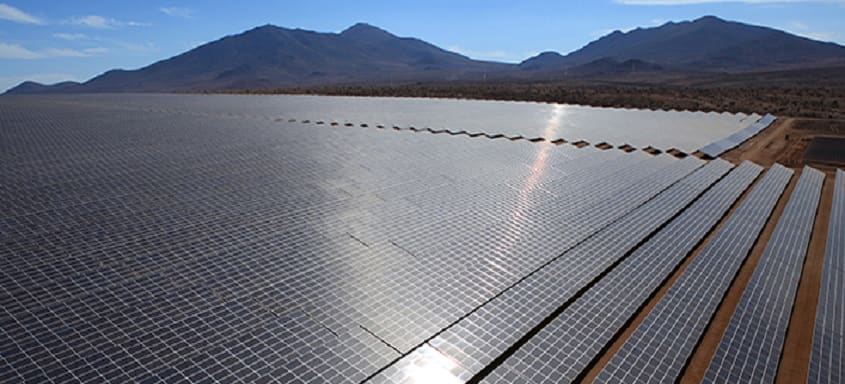The construction and operation of the El Romero Solar photovoltaic plant, developed by ACCIONA in the Atacama Desert, will contribute 316 million dollars to the Gross Domestic Product (GDP) of Chile during its life cycle, twice the figure for a standard equivalent coal-fired plant.
This conclusion emerges from a socioeconomic impact report on the facility prepared by the company using the methodology of the consultancy EY, and will come into effect once the commercial start-up of the plant takes place.
The study reflects ACCIONA’s interest in knowing about the socioeconomic and environmental footprint of its activities, based on the guidelines contained in its Master Sustainability Plan, whereby it has been carrying out studies on its strategic markets and its most emblematic installations. This is the case of El Romero Solar, the highest-
capacity photovoltaic plant in Latin America (246 MWp) when it entered service in November 2016.
Based on symmetrical input/output tables (also known as the Leontief model), the study concludes that El Romero Solar will contribute 210 million dollars to the GDP of Chile during its 35-year life cycle, plus 106 million during the construction phase. Of the 316 million, 155 correspond to direct effects of ACCIONA’s activity, 84 to indirect effects in the supply chain, and another 77 are induced in other economic sectors.
This contribution to the country’s GDP represents 59.1 million dollars per gigawatt-hour produced by the plant and 1.27 million for every million dollars invested in the plant.
EMPLOYMENT AND THE ENVIRONMENT
The study also examines the impact of El Romero in terms of job creation. During the preparation and construction phase (13 months) 2,083 permanent jobs were created (2,291 measured in job-years). Of these, 1,185 were direct, 405 indirect and 493 induced. In the operational phase, 132 permanent jobs will be created over the 35 years of the plant’s working life (4,612 in terms of job-years), of which 73 will be direct, 28 indirect and 31 induced.
Regarding environmental externalities, the report highlights that El Romero Solar avoids the emission of 327,242 tonnes of CO2 per year –taking the thermal energy mix of the Chilean Central Interconnected System (SIC) as the base – i.e. an annual saving of 21 million dollars in costs linked to greenhouse gases. As water is not used in the production process, the solar plant will also save 701,310 m3 a year, equivalent to the consumption of 2,338 Chilean homes. As for polluting gas emissions (SO2 y NOx), El
Romero will avoid 2,854 tonnes per year, with an associated saving in healthcare costs of around 4.2 million dollars.
COMPARISON WITH COAL-FIRED POWER STATIONS
The study includes a comparative analysis with an equivalent conventional coal-fired power station, and concludes that the latter contributes around half of El Romero (154 million dollars) to Chile’s GDP during its construction over a working life of 40 years. Of this sum, 69 million will be due to the direct effect, 45 million for the indirect effect and 40 million for the induced effect.
The solar plant also beats coal-fired plants in terms of job creation. The figure of 6,903 job-years (direct, indirect and induced) generated by El Romero over the construction phase and its 35 years’ working life falls to 3,631 job-years in the case of a thermal plant, considering a standard working life of 40 years.
Relating job creation to the energy produced, while El Romero creates 1,291 job-years for each terawatt-hour (TWh) it produces, an equivalent coal-fired plant would generate 966 job-years, i.e. 25% less.


































